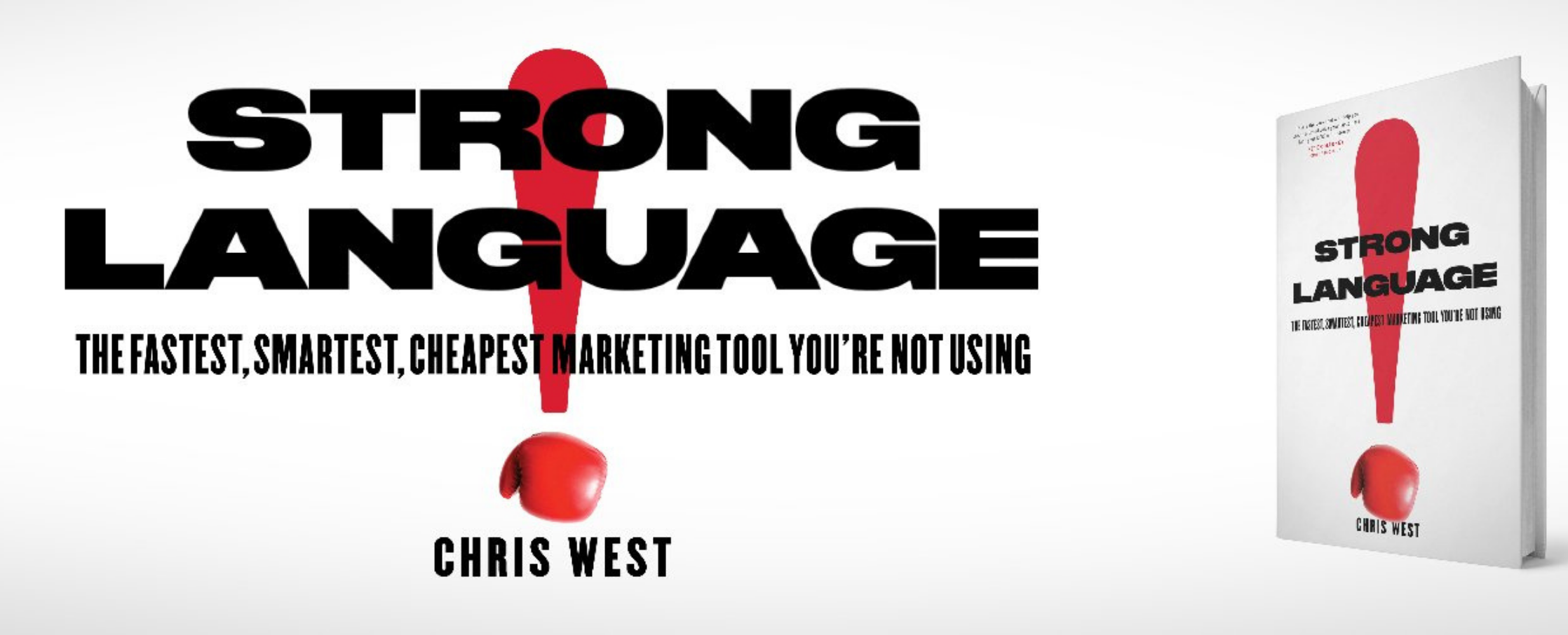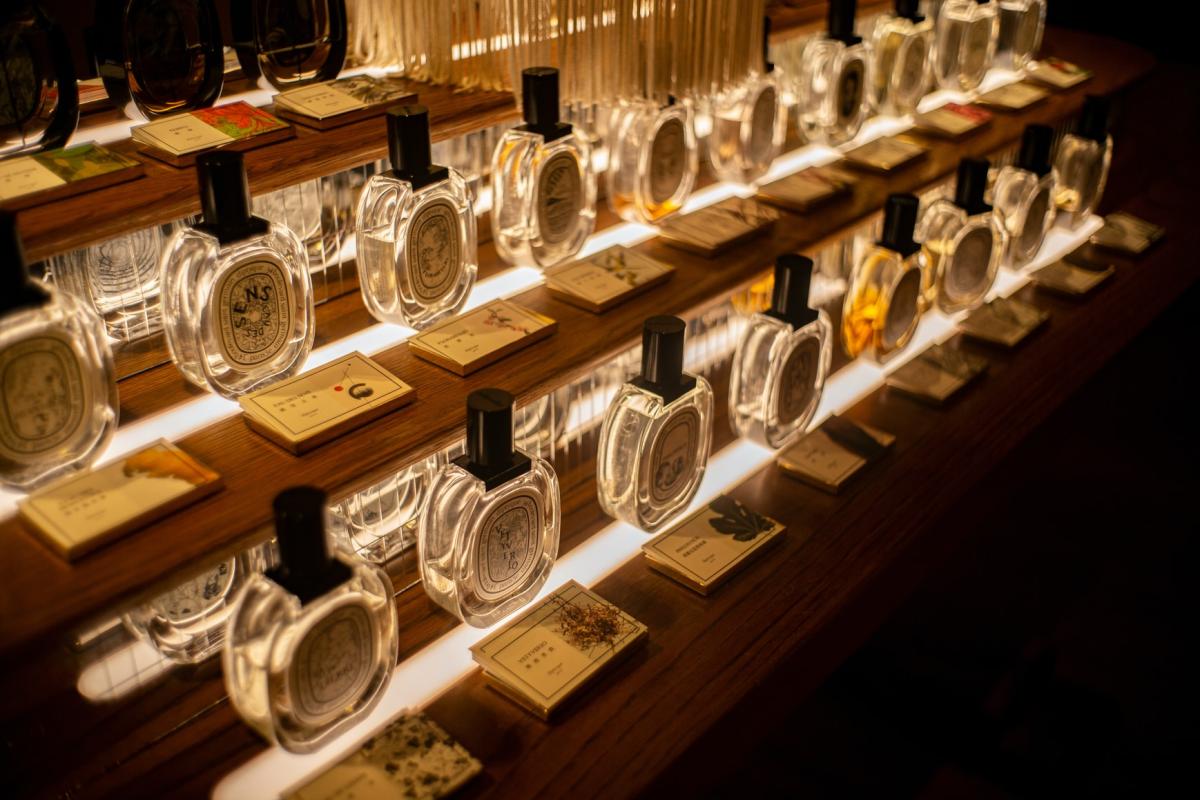Do you know how your brand smells?
What does it taste like?
You’ll know the answers if you’re in the food and beverage business, but what about the rest of us?
And what does your brand sound like?
And how does it feel?
Don’t worry, I’m not tripping. But I am thinking more deeply about the brand assets we all tend to overlook.
These other senses have been playing in my mind since I started writing my book STRONG LANGUAGE: THE FASTEST, SMARTEST, CHEAPEST MARKETING TOOL YOU’RE NOT USING.
Because if we are overlooking the role of something as fundamental as language in building our brands, winning customers, deepening loyalty and de-positioning our rivals, are we overlooking other valuable assets too?
And what would happen if we became more aware of them?
Well, for a start, I’d go back to the supermarket chain that I prefer (great value, good ethics) but am currently avoiding: every branch I go in has the weird smell of slightly rotted vegetables.
I’d thought it was just me imagining it, until I was on a visit to a different town and went with my partner into the newly built branch of an upmarket alternative with a tonally similar colour scheme, and she came out saying that it also smelt of mildly rotted vegetables. We looked back at the store signage. We’d mistaken the colour scheme for Waitrose, but it was in fact the other supermarket we’d tried to avoid. The brand owners had spent all that money on the fit out, but had overlooked one of the key senses.
We know that smells trigger memories, so why don’t more stores care about them as much as Jo Malone and Lush? Why doesn’t a shoe store smell of leather? Why doesn’t Costa smell of coffee?

Smells have a direct route to the limbic system in our brains, including the amygdala and hippocampus, the regions related to emotion. Why aren’t we making more of the power of smell?
And why does your office, the beating heart and pulsing brain of your brand, smell of, well, nothing? What if VW’s head office smelt of (please, not the little tree air freshener) but something more car-y? What if your office, now we’re all returning to work, smelt of the great outdoors or something inspiring?
And should your brand have a sound? Well, Skype does. That’s sonic branding. But there are other kinds of sound assets.
If you go and see the new James Bond movie during the day, the sound will be too loud. Why? Because it’s set for an auditorium full of people, each of whom absorbs some of the sound. Without them, when it’s just you and a row of students at the 13.20 showing, the sound is overbearing.
And forgetting about the words for a moment, what message does the falsely chirpy tone of your on-hold voice say about your brand, as you’re asking people to wait during these times of unexpectedly high demand?
Touch is also important. Apparently, BA Silver Card holders used to get a light touch on the upper arm from the cabin crew, whereas Gold Card holders would receive a gentle touch on the forearm or back of the wrist. Touch signals intimacy, a relationship – which is what brands are all about.
Touch is the most personal of all the senses. And the best brands know how to use it well. Sometimes when I’m in Bond Street and it’s all getting a bit too much, I’ll go into the basement of the Ralph Lauren store and sit in the home furnishings department, rubbing my hands across different textures: the gently giving tension of knitted woolen blankets, the slightly synthetic feel of the velvet cushion, or the soothing caress of a cashmere blanket.
I’m not saying every store can feel like Ralph’s place, but there are so many sticky carpets, metallic edges and cold hard door handles (in our stores and our offices) that they give our brand experience a sense of coldness and functionality.
If you’re a brand director, isn’t every touchpoint – both metaphorical and literal – part of your brand’s value?
Can we put a value on these other brand assets we so often overlook?
That’s hard.
Can we find evidence that they’ll have an impact? We can if we look at the brands we admire. We so often hear our CEOs and ourselves saying we want to be more like Apple. And Apple’s success wasn’t built just on the phone’s functionality. Each of the brand’s assets was carefully considered, so they worked together and the brand was far more than the sum of its parts.
I still believe in the title of my book and that language is the fastest, smartest and cheapest marketing asset that most brands are overlooking. And I know how much Steve Jobs cared about language.
But I remember how much he cared about all the other brand assets, once saying “When you open the box of an iPhone or iPad, we want that tactile experience to set the tone for how you perceive the product”.
In the words of Steve Jobs, all of our brand assets impute the values of our brand.

Chris West’s STRONG LANGUAGE: THE FASTEST, SMARTEST, CHEAPEST MARKETING TOOL YOU’RE NOT USING was published September 28th and became an Amazon #1 best-seller on September 29th.
You can hear more about what brands are doing with language by following Chris West on LinkedIn.
Chris supplements his income from the book with occasional affiliate links and clicking on the book here might result in a small commission payment from Amazon to him.



